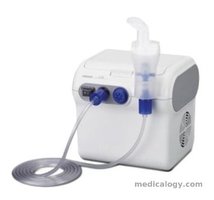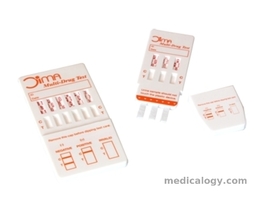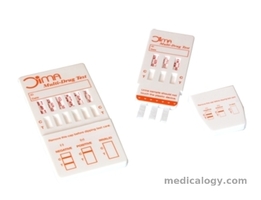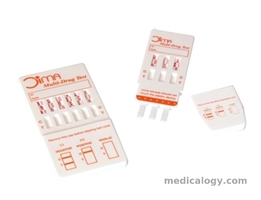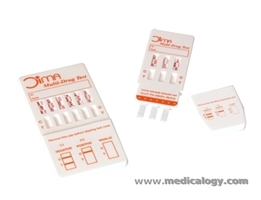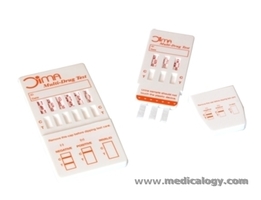- info@medicalogy.com
- 0877 7555 4616

Rapid Test Answer AMP (Amphetamine) 40 Card/Box
Dijamin original dan bergaransi
A reactive (positive) result is only preliminary
Harga Rapid Test Answer AMP (Amphetamine) 40 Card/Box :
Produk yang dibeli bersamaan:
Deskripsi Rapid Test Answer AMP (Amphetamine) 40 Card/Box
- Rapid (point-of-care) tests can be conducted away from specialised laboratory facilities and give results in less than 30 minutes.
- A reactive (positive) result is only preliminary and must be followed-up by confirmatory tests.
- Substantial differences in the performance of different test kits have been reported.
- Most rapid tests detect antibodies only, but a test that also looks for p24 antigen was introduced in 2009.
Rapid tests are often referred to as point-of-care tests because rather than sending a blood sample to a laboratory, the test can be conducted and the result read in a doctor’s office or a community setting, without specialised laboratory equipment. The sample taken is usually either finger-prick blood or saliva.
For people taking a test, the defining feature is that the result can usually be given within 20 or 30 minutes, which is often more convenient and can mean that many more people actually receive their test results.
However some laboratory professionals have viewed these tests with scepticism, noting inferior performance to fourth-generation tests and raising concerns about how quality control can be maintained away from the lab.
Rapid tests perform poorly in detecting very recent infection. Although a fourth-generation rapid test is now available (Determine HIV-1/2 Ag/Ab Combo) it does not match the performance of fourth-generation laboratory tests.
All HIV tests need to have reactive (positive) results confirmed with confirmatory tests. A particular challenge with rapid tests is how to communicate a reactive result to the client (who may be present while the result is being read) and explain that supplementary tests are needed.
Although the evaluation studies of rapid tests that are marketed in the UK have generally reported that the test are very specific (have a low rate of false positives), a number of testing sites in other countries have experienced unexplained rises in the numbers of false positives (particularly when using OraQuick on saliva samples).
Tests always produce a small number of false positive results, but the problems this will cause will depend on how many true positive results the test gives. This depends on the prevalence in the local population, and is expressed as the positive predictive value (PPV). In a low prevalence population of 0.1% (typical background UK HIV prevalence) a specificity of 99.4% leads to a positive predictive value of just 14%. That is, six of every seven positive tests are false positives. PPV improves with rising prevalence, being 97% with a prevalence of 15% (typical HIV prevalence in London gay men).1
For that reason, less specific tests may appropriately be limited to use with high prevalence communities.
Review Rapid Test Answer AMP (Amphetamine) 40 Card/Box
Belum ada ulasan.

